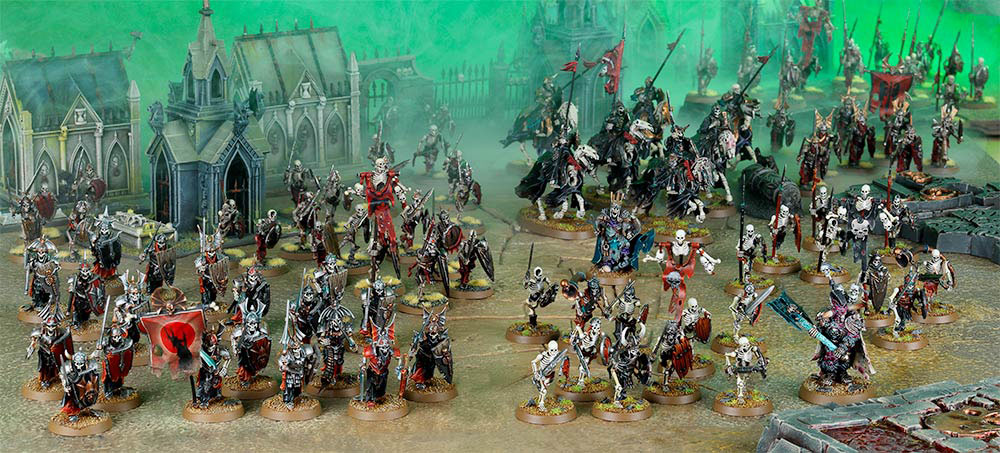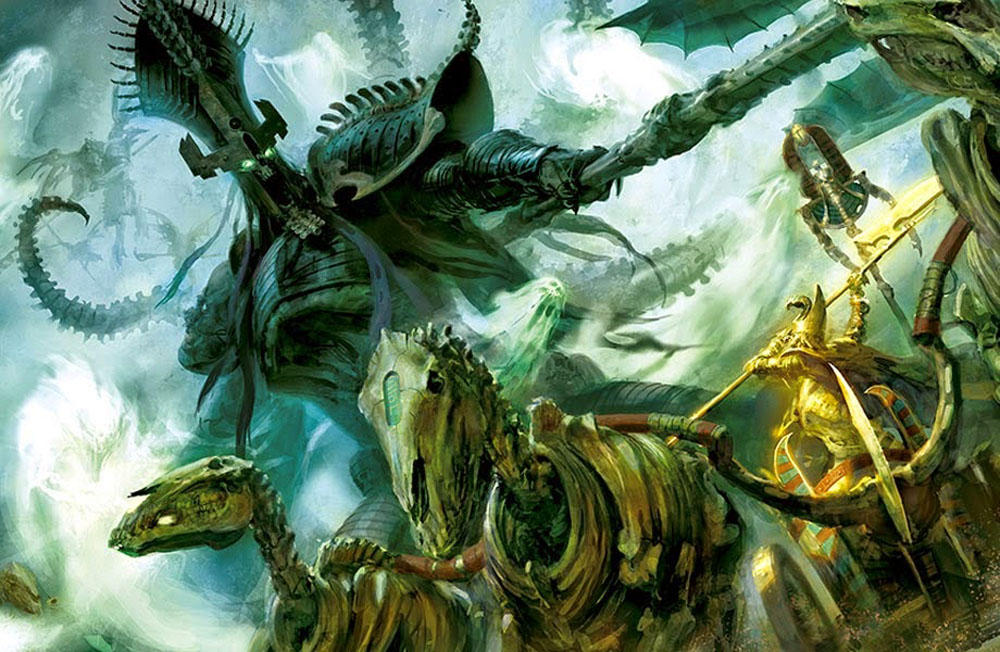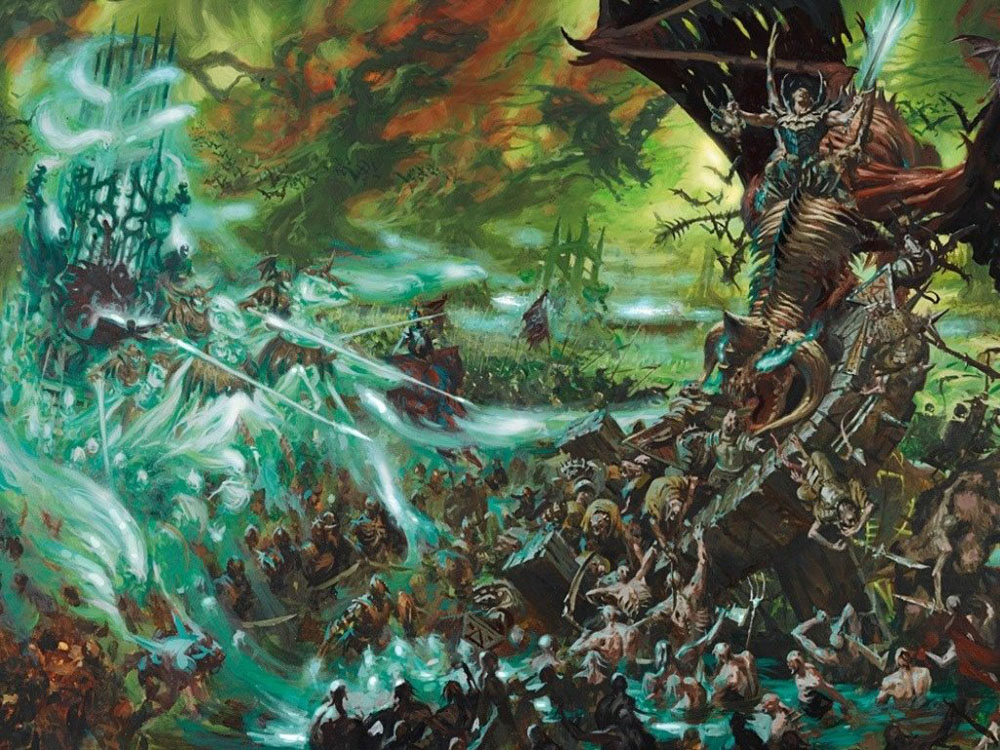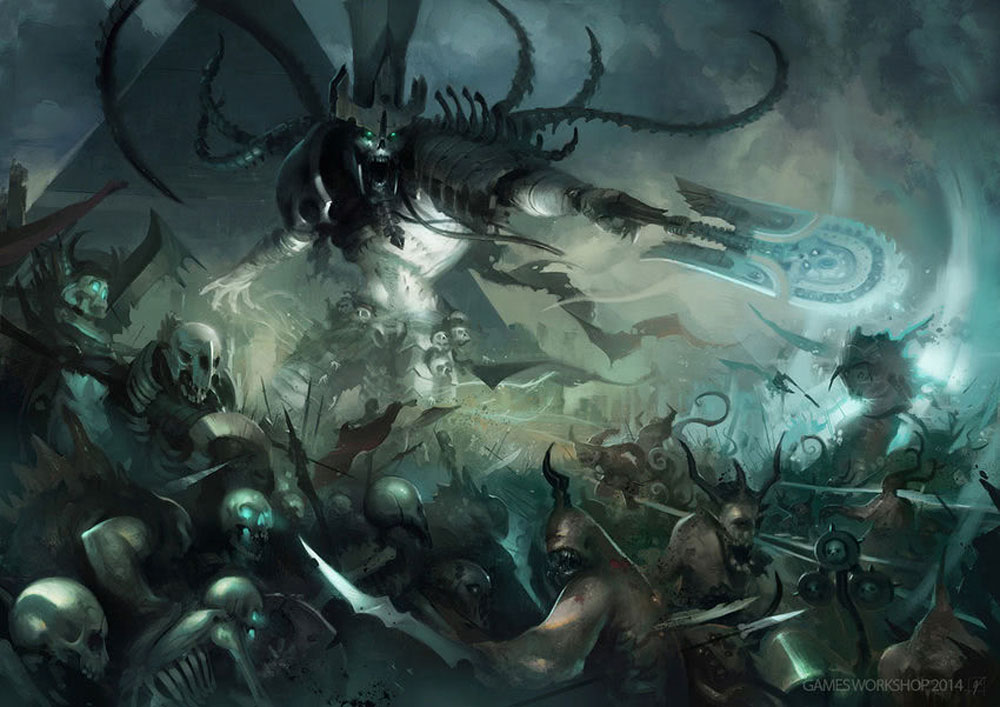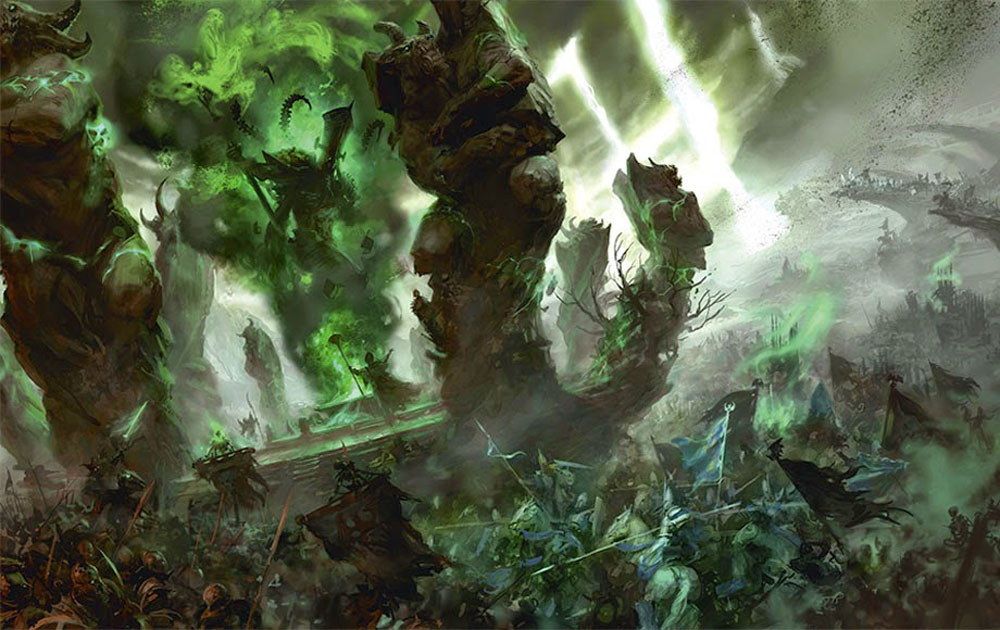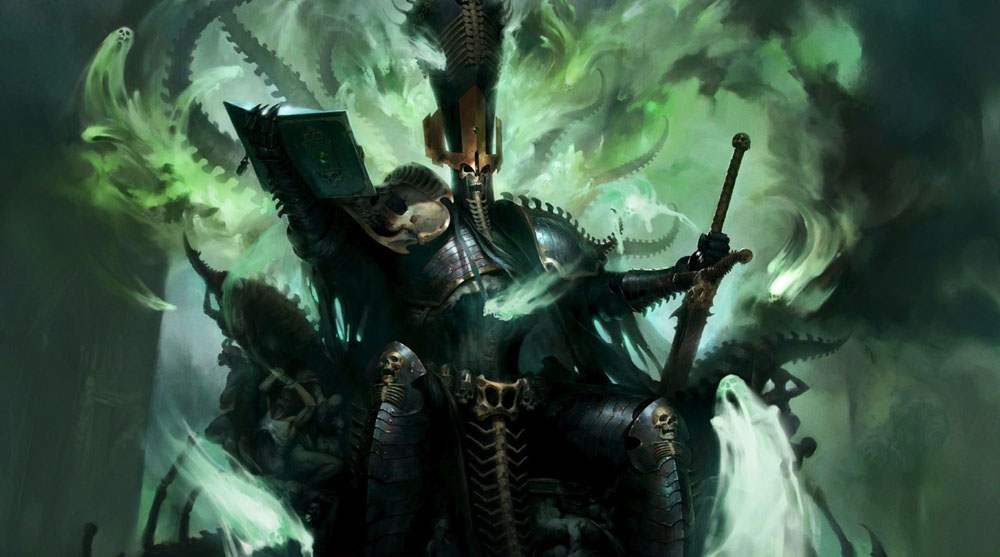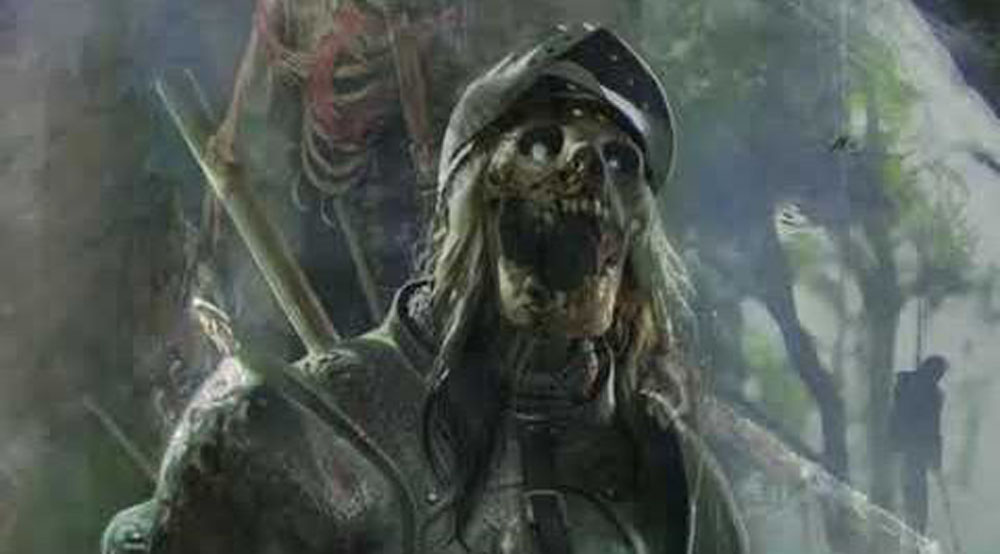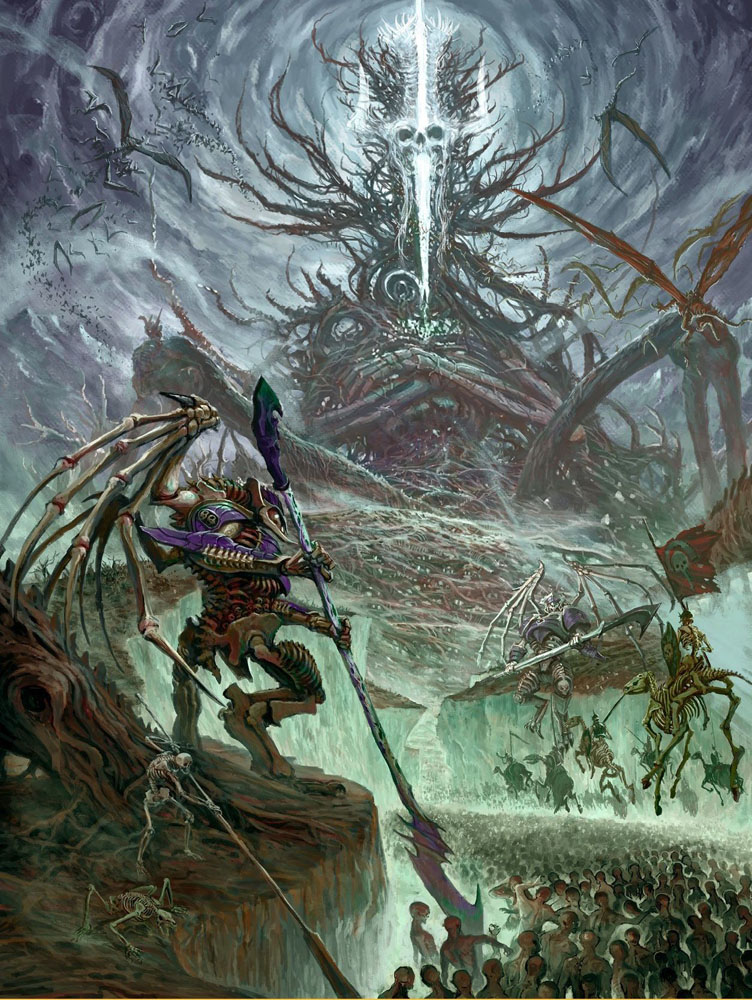For a long time, the new rules bypassed the Grand Alliance of Death in the Age of Sigmar. Except for the special army of Flesheater courts. Now we’ve got the first full-scale Death battletome. Legions of Nagash. Let's try to find out what's interesting there.
You are going to be immediately disappointed by the fact that there are no new miniatures. The lineup remains old, with a few new items released during the End of Times. Well, Death players got used to it. After all, there are still beautiful Nagash, Mortarhs, and Morghasts.
This book covers all the remaining models of Death and offers a division into several sub-factions. The main ones are Grand Host of Nagash itself, and three legions of his Mortarchs. If you take Nagash, he must be the general, which is logical. Similarly - with Mortarchs in their legions.
Nagash still casts a huge amount of spells and even retained the ability to force your opponent to guess which hand you hid the dice in. It sounds wild, but it's a 50% chance to remove any enemy model from the table. For its huge price Nagash is unlikely to appear in small games, but in battles from 2000 pts you will have to save it with all your strength - the enemy definitely will not let him stay alive (as far as the concept of "alive" in general applies to him).
Regardless of which of the sub-factions you are playing, now before the game starts you can put "Gravesite" on the battlefield - 4 spots, 2 in your deployment, 2 - anywhere. If there is your character next to them, then you can unleash the units stored in the reserve from them, heal, or even restore the models to the units nearby. Certainly, a pleasant feature. It is quite obvious that if you play the mission about holding the objectives, you will set up these Gravesites close to key locations, and deliver your enemies much trouble. In addition, almost all units have 6+ FNP from any wounds. Not the thing you could rely on, but it can appear useful anyway.
Each of the legions, and the Host of Nagash, has preferences for certain units, and certain bonuses that affect your play style. For example, the main army regenerates better, the Blood Legion lowers the enemy's leadership, and the Legion of Night can make diversions, and its warriors are more durable. The role of the battleline in different sub-factions is also performed by different units - for example, Nagash is surrounded by Morghasts, who were always terrible enemies, and mow received an additional attack in this army. And, of course, for each sub-faction, there are unique artifacts and the general’s abilities. A complete set for each is too much to fit into one review. But, believe me, there are many interesting opportunities that will diversify your game.
For all this, there are also two big schools of magic - vampire and the magic of death. The first is more aggressive, aimed at direct damage, and the second weakens the enemy, making it harder for him to hit, to wound and lowers his leadership. It’s up to you to choose what you are closer to.
In addition to the main armies, it is necessary to mention two more, presented here - Soulblight and the alliance of Death. They are not so interesting because they lack the Gravesite mechanics, they do not have such interesting abilities, and their main function, in general, is to let you take all the units that are not in this book as allies.
The units themselves have not changed fundamentally in comparison with their previous state. However, instead of summoning spells, now we have a keyword - Summonable, allowing to affect this unit with any options for resurrection, healing, and so on. The abilities of most of the characters somehow interact with this mechanics. Therefore, you get an army that can recover a lot of losses each turn - the main thing is to protect the characters, and correctly place them.
In general, the book leaves a very pleasant impression - Death finally got those rules that the players were waiting for. They really reflect the idea of the army, and, most importantly - have several concepts at once, allowing you to vary tactics from game to game. It's a pity, of course, that unlike the other grand alliances, all Death, in fact, was pushed into one book. But it is variable enough to give you a full-fledged way to play the different armies. The only thing to wish is new miniatures.
